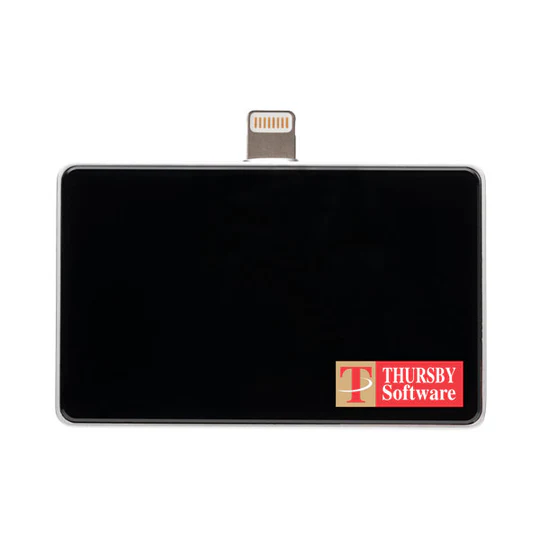Why Your CAC Card Stopped Working (And How to Fix It Fast)
Your Common Access Card (CAC) is your gateway to military systems, government networks, and secure facilities. When it stops working, your entire workday grinds to a halt. Whether you’re getting certificate errors, PIN problems, or your card reader won’t respond, this comprehensive troubleshooting guide covers the 15 most common CAC card problems and their proven solutions.
Quick Diagnosis: Identify Your CAC Problem
Before diving into fixes, identify which category your problem falls into:
- Physical Issues: Card won’t insert, reader doesn’t respond, damaged chip
- PIN Problems: Locked PIN, forgotten PIN, incorrect PIN errors
- Certificate Errors: “No valid certificates,” expired certificates, certificate not trusted
- Reader Issues: Reader not detected, driver problems, compatibility issues
- System Issues: Browser errors, middleware problems, operating system conflicts
Fix #1: CAC Reader Not Detected
Symptoms: Computer doesn’t recognize your CAC reader is plugged in
Solutions:
- Try a different USB port (use USB 2.0 ports for older readers)
- Restart your computer with the reader connected
- Check Device Manager (Windows) or System Information (Mac) to see if reader appears
- Download latest drivers from manufacturer website
- Test with a different CAC reader if available
Pro Tip: USB 3.0 ports (blue inside) can cause compatibility issues with older CAC readers. Always try USB 2.0 ports first.
Fix #2: PIN Is Locked
Symptoms: “PIN is locked” error after multiple incorrect attempts
Solutions:
- Visit your nearest ID card office with valid identification
- For remote unlock: Some units allow PIN reset via verified identity proofing
- Bring two forms of ID when visiting RAPIDS site
- Process typically takes 10-15 minutes
Prevention: After 3 incorrect PIN attempts, stop and verify your PIN before the card locks completely.
Fix #3: Certificate Errors in Browser
Symptoms: “No client certificate,” “Certificate not trusted,” or “ERR_BAD_SSL_CLIENT_AUTH_CERT”
Solutions:
- Install DoD root certificates from Cyber.mil PKI/PKE
- Clear browser cache and certificates (Settings > Privacy > Clear browsing data)
- Verify certificates are installed: Check your browser’s certificate manager
- Update ActivClient or other middleware to latest version
- Follow our complete certificate installation guide
Fix #4: Card Won’t Insert Into Reader
Symptoms: Physical resistance when inserting CAC into reader
Solutions:
- Check card orientation (chip should face specific direction based on reader type)
- Remove any protective sleeves or covers
- Inspect reader slot for debris or obstructions
- Gently clean reader slot with compressed air
- Try a different reader to rule out card damage
Fix #5: “Smart Card Service Not Running” Error (Windows)
Symptoms: Windows error message about smart card service
Solutions:
- Press Windows + R, type “services.msc”
- Find “Smart Card” service
- Right-click and select “Start”
- Set Startup type to “Automatic”
- Restart computer
Fix #6: Expired Certificates on Valid CAC
Symptoms: CAC expiration date is valid, but getting certificate errors
Solutions:
- Check your certificates aren’t within 30 days of expiration
- Visit RAPIDS site to get certificates renewed (can be done before CAC expiration)
- Update DoD root certificates on your computer
- Verify system date/time is correct (certificate validation is time-sensitive)
Learn more about CAC expiration timelines and renewal procedures.
Fix #7: CAC Works on Some Websites But Not Others
Symptoms: Can access some DoD sites but not others
Solutions:
- Clear SSL state: Control Panel > Internet Options > Content > Clear SSL state
- Enable TLS 1.2 in Internet Options > Advanced
- Check if site requires specific certificates you haven’t installed
- Try different browser (Edge, Chrome, Firefox all handle CAC differently)
- Disable browser extensions that might interfere
Fix #8: Mac-Specific CAC Problems
Symptoms: CAC issues unique to macOS
Solutions:
- Install CACKey or OpenSC middleware
- Enable smart card pairing in macOS settings
- Import DoD certificates to Keychain Access
- Set certificate trust levels to “Always Trust” for DoD roots
- Check our complete Mac CAC setup guide
Fix #9: ActivClient/Middleware Not Working
Symptoms: Middleware software crashes or won’t launch
Solutions:
- Uninstall current middleware completely
- Restart computer
- Download latest version from official source
- Install with administrator rights
- Run as administrator after installation
Fix #10: Damaged or Scratched CAC Chip
Symptoms: Visible damage to gold chip on card
Solutions:
- Gently clean chip with soft, dry cloth
- Try multiple readers to confirm it’s card issue
- If chip is scratched/damaged, card must be replaced
- Request emergency replacement at RAPIDS site
- Bring two forms of ID for faster processing
Fix #11: Email Certificate Problems
Symptoms: Can’t send encrypted/signed emails
Solutions:
- Verify email certificate is present on your CAC
- Import email certificate to Outlook/email client
- Check certificate hasn’t expired (different from CAC expiration)
- Configure email client for S/MIME
- Follow our military email setup guide
Fix #12: Group Policy Blocking CAC Access
Symptoms: CAC works at home but not on government computer
Solutions:
- Contact your unit’s IT support desk
- May require administrator to whitelist your CAC certificates
- Verify you’re on correct network (NIPR vs SIPR)
- Check firewall isn’t blocking certificate validation
Fix #13: Remote Access VPN Issues
Symptoms: Can’t connect to VPN with CAC
Solutions:
- Ensure VPN client supports CAC authentication
- Install all required DoD certificates before connecting
- Select correct certificate when prompted (authentication cert, not email)
- Verify CAC reader is connected before launching VPN
- Check with your S6/IT for VPN-specific requirements
Fix #14: Multiple Certificates Causing Confusion
Symptoms: Prompted to choose from many certificates, not sure which to use
Solutions:
- Look for certificate with your name and “LAST.FIRST.MIDDLE.EDIPI”
- For websites: Use “Authentication” certificate (not email or signature)
- For email: Use “Email Encryption” certificate
- For signing: Use “Digital Signature” certificate
- Remove old/expired certificates from your system
Fix #15: Windows Hello/Biometrics Interfering
Symptoms: Windows biometric login conflicts with CAC
Solutions:
- Disable Windows Hello temporarily
- Settings > Accounts > Sign-in options
- Turn off facial recognition/fingerprint during CAC use
- Use PIN or password login instead
- Re-enable after CAC session complete
When to Get a Replacement CAC Card
Sometimes your CAC card is beyond fixing. Get a replacement if:
- Chip is visibly damaged, cracked, or scratched
- Card is bent, warped, or physically broken
- Expiring within 30 days
- Card works on no readers (after testing multiple)
- Name/rank has changed
Visit your nearest RAPIDS site with two forms of ID. Replacement typically takes 15-30 minutes.
Essential CAC Resources
- DoD Certificates: https://public.cyber.mil/pki-pke/
- RAPIDS Locator: https://idco.dmdc.osd.mil/idco/
- ActivClient Downloads: Contact your unit S6/IT support
- Certificate Status Check: https://crl.gds.disa.mil/
Prevention Tips: Keep Your CAC Working
- Protect the chip: Store CAC in protective sleeve when not in use
- Update regularly: Keep middleware and certificates current
- Remember your PIN: Write it down and store securely at home
- Monitor expiration: Start renewal 60-90 days before expiration
- Test periodically: Verify CAC access before you need it urgently
- Backup reader: Keep spare CAC reader for emergencies
Still Not Working? Next Steps
If you’ve tried all 15 fixes and your CAC still isn’t working:
- Contact your unit’s IT help desk or S6 shop
- Visit your nearest RAPIDS ID card office
- Call the DoD Enterprise Service Desk: 1-844-347-1850
- Check if there’s a system-wide outage affecting CAC authentication
For more troubleshooting help, see our guides on common CAC issues and fixing certificate errors.
Recommended CAC Equipment & Guides
Having the right equipment makes CAC access reliable and hassle-free. Check out our comprehensive buying guides:
- Best CAC Card Readers 2025 – USB-C vs USB-A comparison with verified Amazon products
- Complete CAC Home Office Setup – Equipment checklist including readers, hubs, and docking stations
- Best USB-C CAC Readers – Future-proof readers for modern laptops and MacBooks
- CAC Mobile Readers for iPhone & Android – Access military email from your phone
- Best Laptops for CAC Access – Remote work laptops with CAC compatibility





